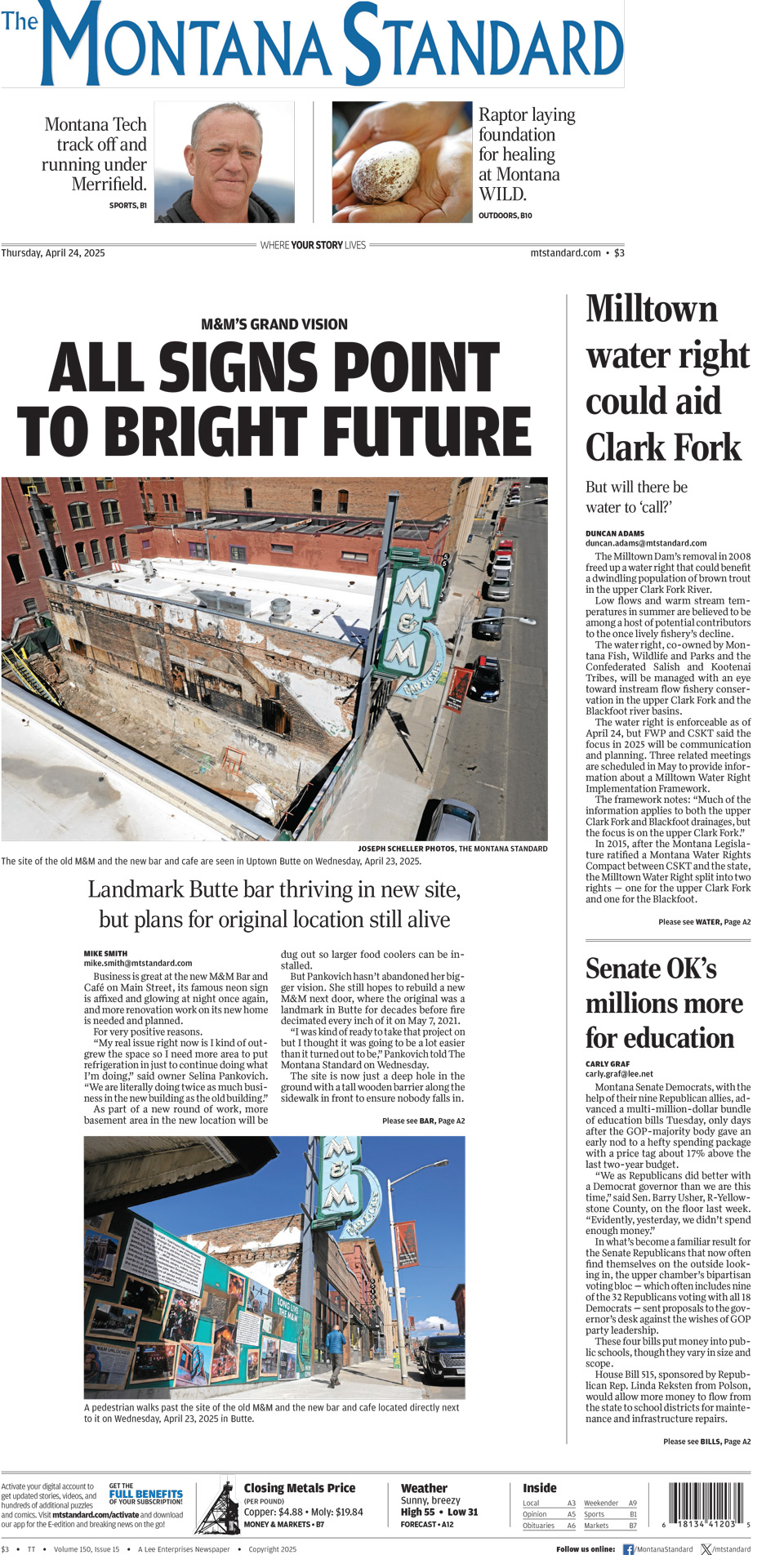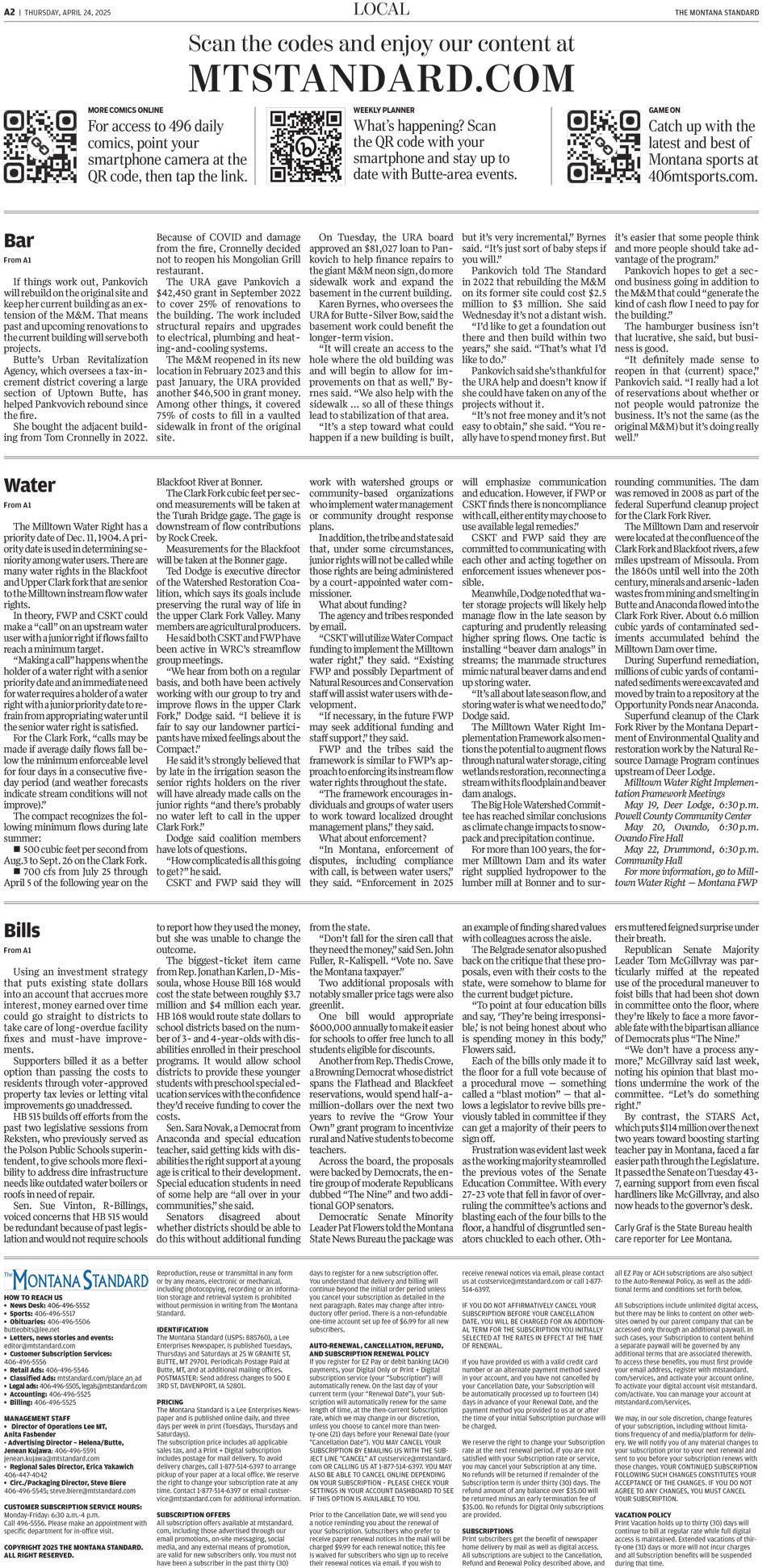Most recent news about the WRC.
Planning Ahead for the Future of Working Lands
It’s no secret grizzly bears are on the move into parts of Montana where they haven’t been seen in a long time. When I was a kid growing up in a mining camp near Garrison, I never gave them much thought. Today, that’s changing.
More bears on the landscape means recovery efforts are working—but it also brings new challenges for rural Montana. Ranchers and small communities across the state are learning to live with grizzlies. It’s a big shift in how we operate. And for many of us, the big question is: how do we keep agriculture viable?
Here in the Upper Clark Fork Valley, we’re at a crossroads—literally and figuratively. Our valley sits between the Northern Continental Divide, Greater Yellowstone, and Bitterroot ecosystems. It’s inevitable that more grizzlies will be passing through our working lands and communities. We believe it’s in everyone’s interest to plan ahead and get out in front of it.
That’s why, seven years ago, we launched a carcass pickup and compost service—to give livestock producers from Garrison Junction to the Continental Divide a practical tool to reduce conflict before it starts. Ranchers have always had to deal with livestock death. That’s nothing new. What is new is dealing with grizzlies traveling miles to reach those carcasses, which creates safety risks for both people and property.
Our pickup program safely transports carcasses to a composting facility, keeping bear attractants off the landscape. That facility, located in Deer Lodge, has become a great example of how rural communities and ranchers can band together to solve emerging challenges.
We’ve kept this service running on a shoestring budget for years—but as demand kept growing, so did the need for something bigger. Thankfully, this year marks a turning point. A historic public-private partnership is finally giving us the tools to expand and strengthen what we started.
Beginning this year, a conflict reduction funding program—led by Montana Fish, Wildlife & Parks and the nonprofit Heart of the Rockies Initiative—is helping landowner-led efforts like ours maintain and expand proven tools. Backed by both state and federal agencies, this partnership is directing much-needed funding across Montana. It’s not just a quick patch—it’s how we begin building the kind of support system ranchers need, with the right partners at the table.
The impact goes beyond the Upper Clark Fork. More than 15 landowner-led and tribal groups across Montana are stepping up with local solutions—whether it’s carcass management, electric fencing, or other field-tested tools. None of this would be possible without people pulling together—ranchers, agency folks, nonprofits, and neighbors—all working toward the same goal: keeping our lands productive, our communities safe, and our wildlife out of trouble.
But these tools aren’t cheap—and it’s not fair to expect individual producers to shoulder the full cost of managing public wildlife. That’s why access to sustained, long-term funding matters. This new investment gives us a real shot at building a system that supports conflict prevention in a more meaningful way.
Montana is at a turning point. If we want to keep working lands viable—and keep our rural communities strong—we have to invest in conflict prevention and coexistence. Living with grizzlies and other carnivores has its share of challenges. But with strong partnerships and the right investments, we’re showing it can be done.
Ted Dodge is Executive Director of the Watershed Restoration Coalition, which works to preserve the rural way of life in Montana’s Upper Clark Fork Valley.

